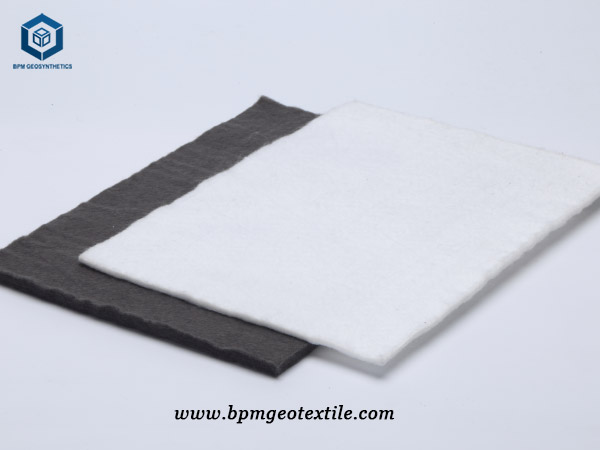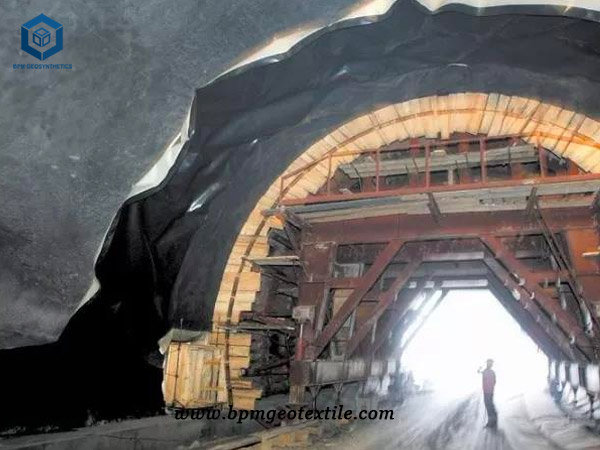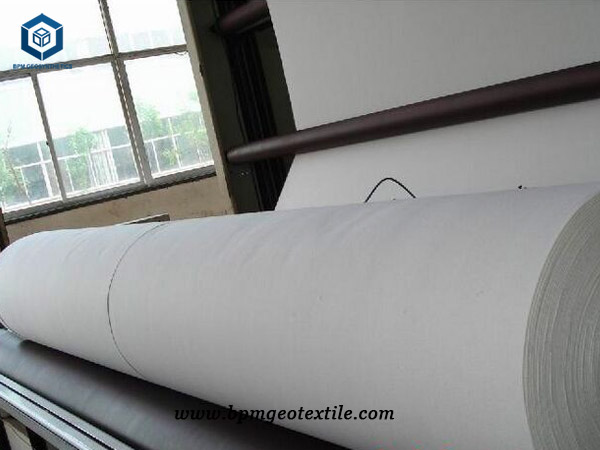Non Woven Geotextile Separation Layer for Tunnel Project in Namibia
Non woven geotextile separation layer is the the permeable and durable geosynthetic layer widely used to filter, separate, reinforce, protect, retain or drain soil for civil construction applications. BPM non woven geotextile is constructed from the original continuous polyester filaments in any direction and is formed by needle-punching and thermal bonding processes during the manufacturing process to form a sturdy fabric that retains dimensional stability and resist the damage caused by building stress. BPM filament non woven geotextile separation layer is available in varying strengths and thicknesses to ensure appropriate material selection for your requirements. Custom roll size and thickness are also available.
Non woven geotextile fabric is a drainage mat material that is widely used in tunnels. The geotextile separation layer mainly serves as a cushioning protection for the waterproof board and a certain drainage effect. The geotextile separation layer is fixed to the surface of the tunnel by the dragon, and then the lining is placed on the geotextile and welded to the keel. The geotextile separation layer can increase stability and prevent freezing damage at low temperatures, as well as isolation, filtration and reinforcement.
The Four Main Functions of Geotextile Separation Layer in Tunnel Drainage Application
(1) Protect the Waterproof Board
After the hole is dug, the surface of the sprayed mortar will inevitably have many burrs, and even some exposed sharp stones. After the non woven geotextile fabric is laid on the wall, the waterproof board can be protected from sharp stones and burrs. , leakage occurred.
(2) Drainage
The non woven geotextile is used between the wall of the cave and the waterproof board to serve as a drainage. The water in the mountain will seep out on the wall of the cave and will flow along the geotextile, that is, along the inner surface of the waterproof board.
(3)Strengthen
The non woven geotextile separation layer is located between the cement sprayed layer and the waterproof board. In addition to protecting the waterproof board from being pierced by sharp pointed stones, it also strengthens the mechanical properties of the cement sprayed layer and improves the overall adhesion between the cement layer and the wall to prevent the falling and collapse of cement.
(4)Filteration
The water in the mountain often encloses a lot of impurities such as dirt, stones, grass and leaves. If there is no filtering of the geotextile separation layer, the drainage pipe will be blocked quickly, resulting in poor drainage.
BPM South Africa client got a tunnel project in Namibia. They sent us an inquiry, which required a large amount of 300g geotextile separation layer and sent us the technical parameters together. According to the customer’s parameters and project requirements, we recommended the PET filament non woven geotextile fabric, and sent them the quotation and test report by email on the same day. Then we sent 300gsm non-woven geotextile separation layer according to the customer’s requirements, the customer was satisfied with the quality of our products by testing. We negotiated the price, packing, payment and other details, the the customer placed the order with us.
Specifications of Non Woven Geotextile Separation Layer for Tunnel Project in Namibia
- Total geotextile quantity – 91,594 square meters
- Geotextile fabric Weight – 300g/m2
- Each roll size – 5.8m*50m
- Three 40HQ containers
About BPM
BPM has provided many types of effective and states of the art geotextile, geomembranes, and other geosynthetics to over 36 countries. Our geosynthetic products are widely used across a variety of industries including waste containment, water containment, aquaculture, industrial project, energy project and mining projects, etc. Our main customers are from Australia, France, Sweden, UK, Hungary, New Zealand, Poland, Mexico, Ecuador, Brazil, Pakistan, Bangladesh, Thailand, Vietnam, Malaysia, Indonesia, Singapore, Philippines, Sri Lanka, India, UAE, Saudi Arabia, Qatar, Kenya, etc.






没有评论:
发表评论